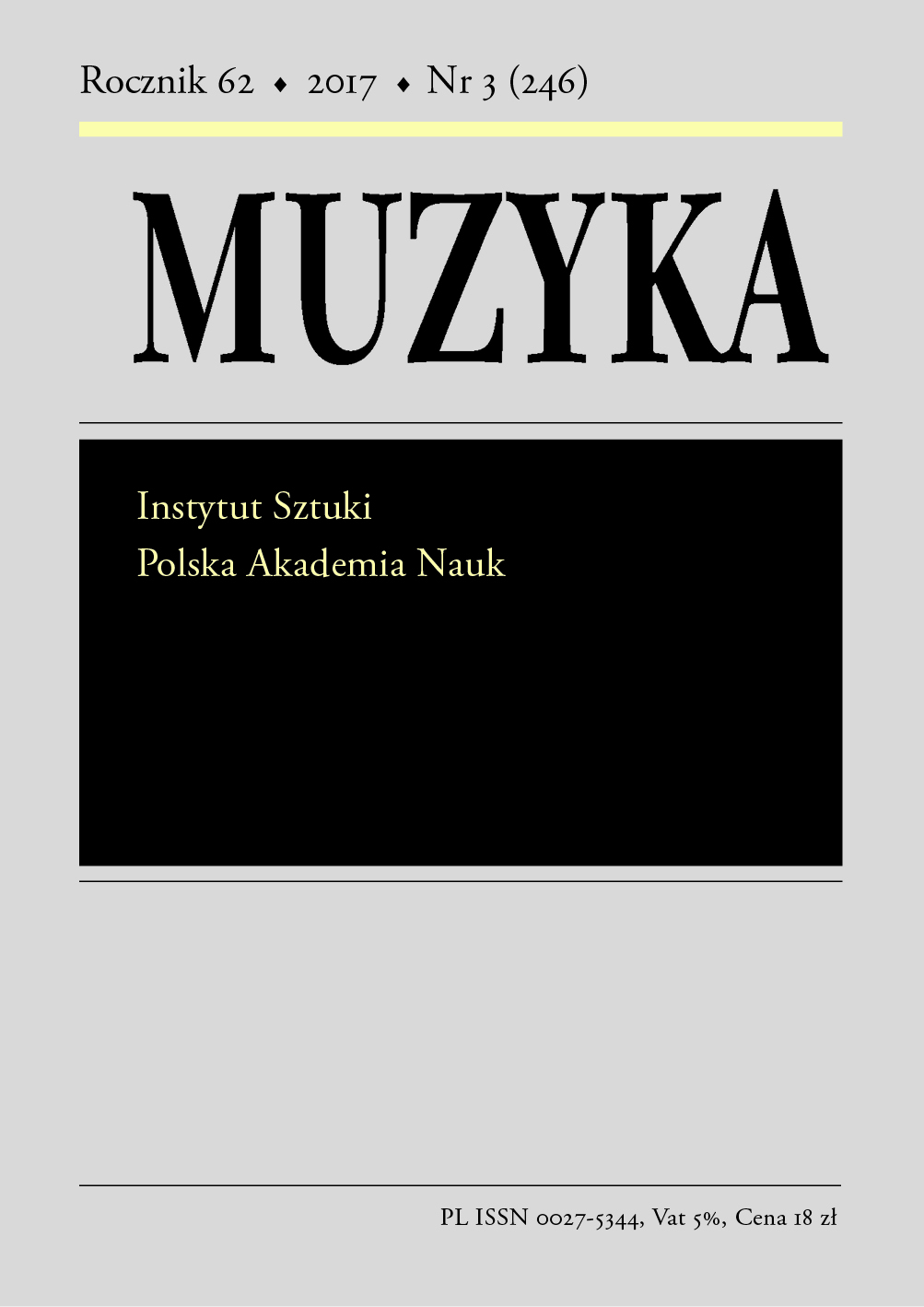Costanzo Festa’s (?) motet 'O Altitudo Divitiarum' re-examined: New suggestions regarding its source context, attribution and function
Costanzo Festa’s (?) motet' O Altitudo Divitiarum' re-examined: New suggestions regarding its source context, attribution and function
Author(s): Wojciech OdojSubject(s): Music
Published by: Instytut Sztuki Polskiej Akademii Nauk
Summary/Abstract: According to José M. Llorens’s catalogue, two anonymous works in the manuscript VatS 38 (scribe: Johannes Parvus), copied around 1550–63, should be ascribed to Costanzo Festa: ‘Gaude felix ecclesia’ (fols. 114v–122r) and ‘O altitudo divitiarum’ (fols. 122v–126r) (Table 1).1 Both are included in Festa’s Opera omnia, although its editor, Albert Seay, admitted having some doubts about these ascriptions,2 being unable to determine on what basis Llorens had made them.3 Nevertheless, the origin of ‘Gaude felix ecclesia’ appears to be quite clear and secure. What Llorens and Seay apparently missed is the fact that this same motet, with the text ‘Gaude felix Florentia’ and an ascription to Andreas de Silva, appears in the manuscript RomeV S1. 35–40 (olim: Vall.S.Borr.E.II.55–60; no. 59).4 The motet was thus included in Andreas de Silva’s ‘Opera omnia’. In the foreword to the edition, Winfried Kirsch says that ‘the historical motet ‘Gaude felix Florentia’ in honor of Pope Leo X, [was] composed probably on the occasion of his election in December 1513.1Yet if one assumes that ‘O altitudo divitiarum’ is by Festa, why was the motet not Copie into at least one of the two manuscripts, RomeV 35-40 and VatS 20? The former is a very important source of ceremonial works written, in general, not long before 1530; the latter is believed to have been entirely dedicated to Festa himself. The fact that this motet does not appear in VatS 20 makes all we have said so far even more complicated, because it neither proves Festa’s authorship nor supports the idea that the work was composed for the Nice talks of 1538 (remember the manuscript was compiled around 1539).3432However, I think that although all these suggestions, hypotheses and questions seem inconclusive, they are at the same time inescapable; taken out of the Vatican manuscript and shown in a broad stylistic and historical context, the motet ‘O altitudo divitiarum’, whether written by Festa or not, seems to be an interesting example of the Renaissance bi-textual ceremonial motet.
Journal: Muzyka
- Issue Year: 62/2017
- Issue No: 3
- Page Range: 55-70
- Page Count: 16
- Language: English

